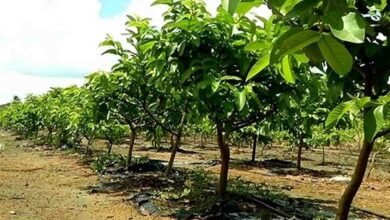This lemon man of Uttar Pradesh did wonders and earns 7 lakhs from every crop
Uttar Pradesh Lemon Man Success Story: In a furniture firm, fifty-year-old Anand Mishra made his woodworking debut as a recent graduate in management. But over time, he developed a new profession in his native Uttar Pradesh village: farming. Mishra began his agricultural career as a typical farmer raising a variety of crops. Eventually he turned to horticulture and developed a passion for producing lemons. His career took a significant turn after this, earning him the nickname “Lemon Man of Uttar Pradesh” in a matter of years.

Mishra is now a well-known farmer across the state of Uttar Pradesh, not only in the Raebareli district, where he cultivates lemons in the hamlet of Kachnawan. Prizes began to arrive from far and wide, the most important of which was the esteemed Chaudhary Charan Singh Kisan Samman.
He quickly rose to fame in the media because of his deft touch. Mishra had a conversation with Krishi Jagran about his career transformation, the key to his success, and his future goals. He said that at first, he farmed rice and wheat, but he did not find it intriguing since it was not profitable. One sunny morning, as he considered better pastures, horticulture crossed his thoughts.
He met with representatives of the District Agriculture Office the very following day, and that is when the idea to cultivate lemons was born. Mishra experimented with typical lemon kinds before deciding to use the delicious Thai variety to increase his productivity. Compared to typical lemons, which weigh between 30 and 50 grams apiece, this specific type produces larger fruits, up to 100 grams each.
Production increased by a staggering 20 times as a consequence. He claims that he gathered 400 boxes (100 tons) of lemons last year, with each crate fetching between Rs 40 and Rs 70 in the neighborhood market. His two-acre orchard produces citrus fruits all year round, and his abundant harvest brings about Rs 7 lakh for him each season. Additionally, he exports his output, and his business has created jobs.
Mishra claims that farmers in Andhra Pradesh, Gujarat, Karnataka, Madhya Pradesh, and Maharashtra—where lemons were cultivated for a living—inspired him to come up with the notion of growing lemons. He explains that traditional crops like wheat, rice, and potatoes are not very lucrative, which makes it difficult for producers to save enough cash for fertilizer and seeds.
When asked how he achieved such a bountiful crop, Mishra revealed the key to his success. In order to enhance the amount of carbon in the soil, he suggested farmers plant tall grass as a manuring crop. He advised keeping a space of 10 by 10 feet between saplings and rows and said that the rows in which the saplings are to be planted must be facing east-west to avoid the saplings from being uprooted by a storm.
Additionally, the saplings should ideally have a pH of between 6 and 7, and they should be put at least one foot deep in the earth. According to him, using both organic and inorganic fertilizer is beneficial for improving soil quality and preventing insect or fungus infestations. Thus, Mishra has added a new meaning to the proverb “make lemonade when life gives you lemons.”





